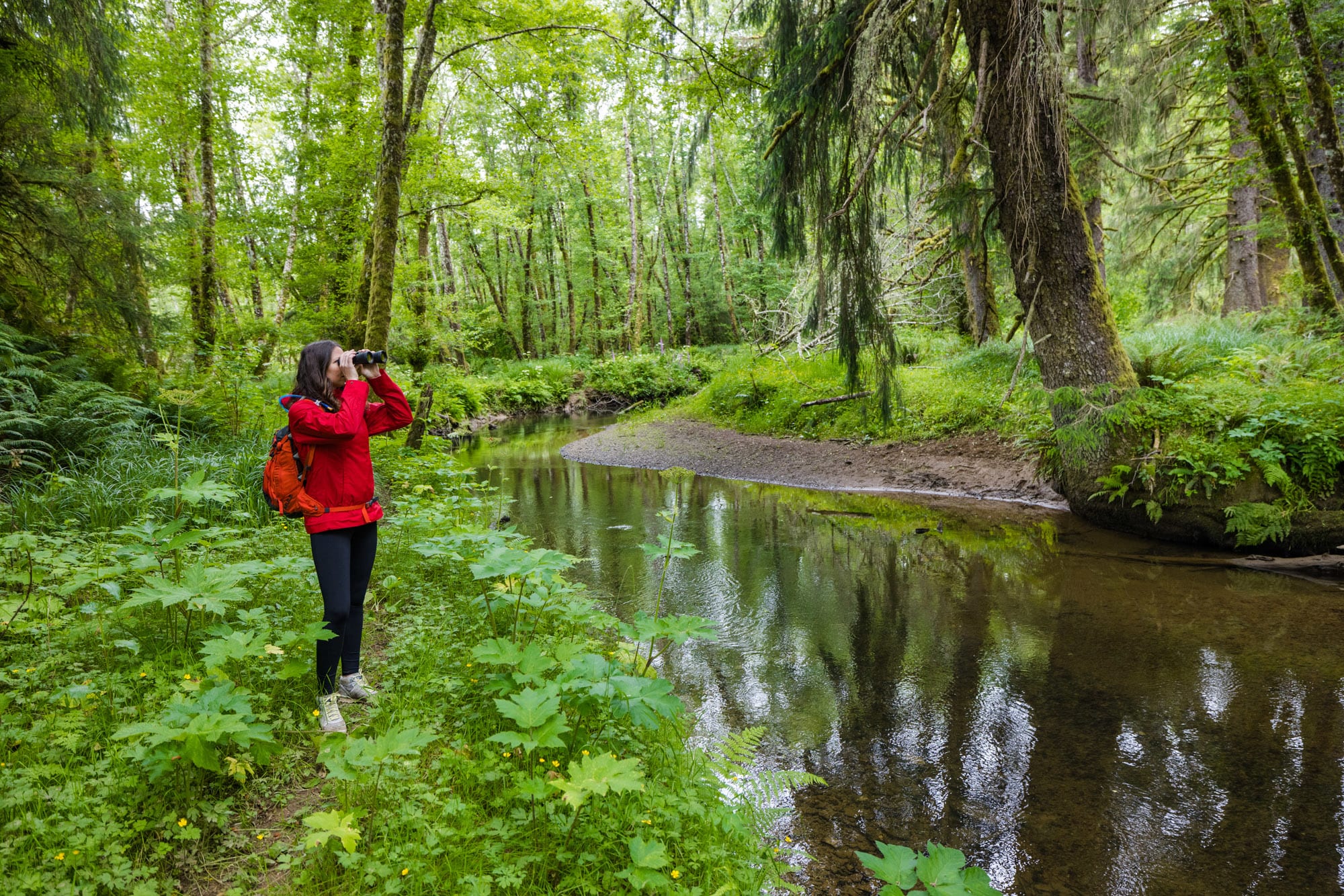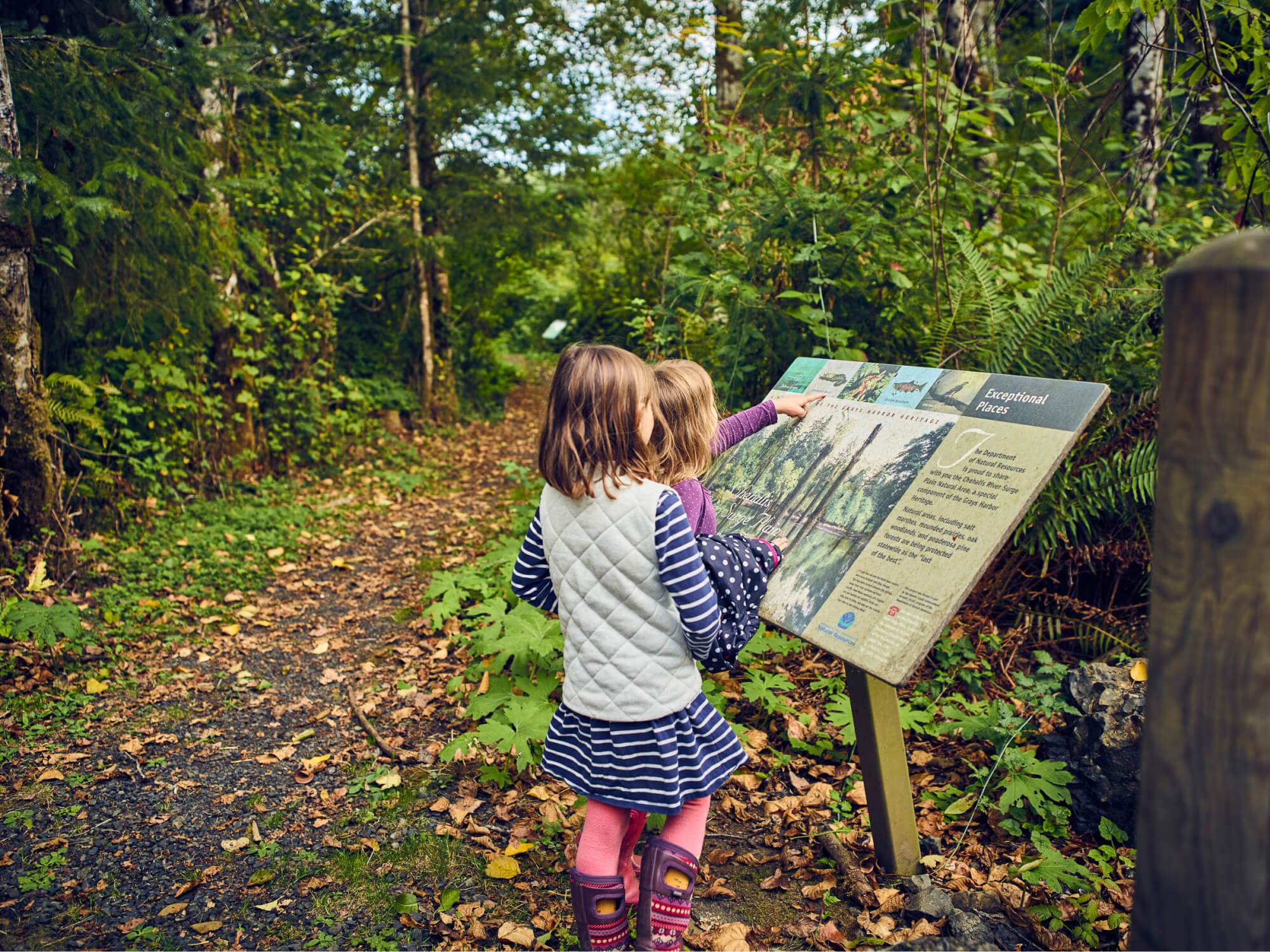PACIFIC COUNTY, Washington—A network of outstanding
Willapa Bay salmon streams and critical stands of temperate forest were
permanently protected last month when Western Rivers Conservancy transferred
the 2,366-acre Willapa Coastal Forest property to the U.S. Fish and Wildlife
Service. The property is now part of the Willapa National Wildlife Refuge.
Conservation of the property helps advance the refuge’s
decade-long Bear River Estuary Restoration Project downstream, and it will
improve public recreational access to the refuge. The transfer follows WRC’s acquisition of the
Willapa Coastal Forest from Forest Investment Associates, an investment manager
specialized in sustainable forestry.
“The Willapa Coastal Forest is an otherworldly kind of place,”
said Alex Barton, project manager for Western Rivers Conservancy. “There are
still pockets of mature coastal forest where giant trees tower over the Bear
River. When you’re there amidst those trees and you see wild salmon swimming
upstream, it’s impossible not to recognize just how important this property is.”
The second largest estuary on the West Coast, Willapa Bay lies
just north of the mouth of the Columbia River. Much of it is protected within
the Willapa National Wildlife Refuge, which was created in 1937. The refuge’s abundant
salt marshes and tidal mudflats, coastal dunes and beaches, grasslands,
freshwater wetlands and old-growth forests are home to abundant fish and
wildlife. Over 200 species of birds are documented annually at Willapa Bay, including
the endangered marbled murrelet.
While much of the Willapa Coastal Forest property was
industrial timberland, it also includes critically important stands of
old-growth forest, as well as younger trees that will be allowed to mature.
Some 39 miles of perennial and intermittent streams flow through the property,
including three miles of the Bear River, a vital salmon-bearing stream that
flows into Willapa Bay.
Chum salmon, fall Chinook, coho, winter steelhead, coastal
cutthroat trout and Pacific lamprey all spawn in the Bear River and its
tributaries, and many of the young fish rear in the revitalized estuary
downstream.
“Adding the Willapa Coastal Forest to the Willapa
National Wildlife Refuge brings multiple benefits to one of Washington’s
natural treasures,” said Jackie Ferrier, project leader at the Willapa National
Wildlife Refuge Complex. “Conserving habitat in and around the Bear River will
complement the refuge’s recent restoration work in the estuary, and adding land
to the refuge will improve access to the area for hikers, hunters, wildlife
watchers and others.”
Recognizing the immense ecological importance of the Willapa
Coastal Forest, Western Rivers Conservancy set out to buy and protect it in
2020. It spent over three years working with Forest Investments Associates and
assembled funding for the project from the Land and Water Conservation Fund and
Washington state’s Salmon Recovery Funding Board. Once funding was in place, Western
Rivers Conservancy was able to purchase the property and convey it to the U.S.
Fish and Wildlife Service to become part of the Willapa National Wildlife
Refuge.
“Congratulations to Western Rivers Conservancy and the U.S. Fish
and Wildlife Service on this tremendous outcome for the Willapa National
Wildlife Refuge,” said Jack Stover, Director of U.S. Operations for FIA. “Our
stewardship approach blends sustainable production forestry with old-growth
conservation and best management practices for watershed protection. We are
thrilled that responsible management will continue with expanded recreation
access for this locally vital property.”
Now that the property is part of the refuge, the USFWS will
work toward opening it in 2025 or 2026 for hiking, bird watching, wildlife
viewing and other compatible recreation. The state lands adjacent to the
Willapa Coastal Forest have historically been very difficult to access, and the
addition of this property to the refuge will make that access easier.
“Conserving miles of salmon spawning habitat immediately
upstream of the newly restored Bear River estuary is a potential game-changer
for fish,” said Barton. “It’s the perfect project at the perfect time."
This project was made possible through funding and
support from the Land and Water Conservation Fund, the Salmon Recovery Funding
Board, The Conservation Alliance, The James M Lea Foundation, Giles W. and Elise
G Mead Foundation, The Gary and Carol Milgard Family, Horizons Foundation, onX
Maps, TOTE Maritime Alaska and Betlach Family Foundation.

